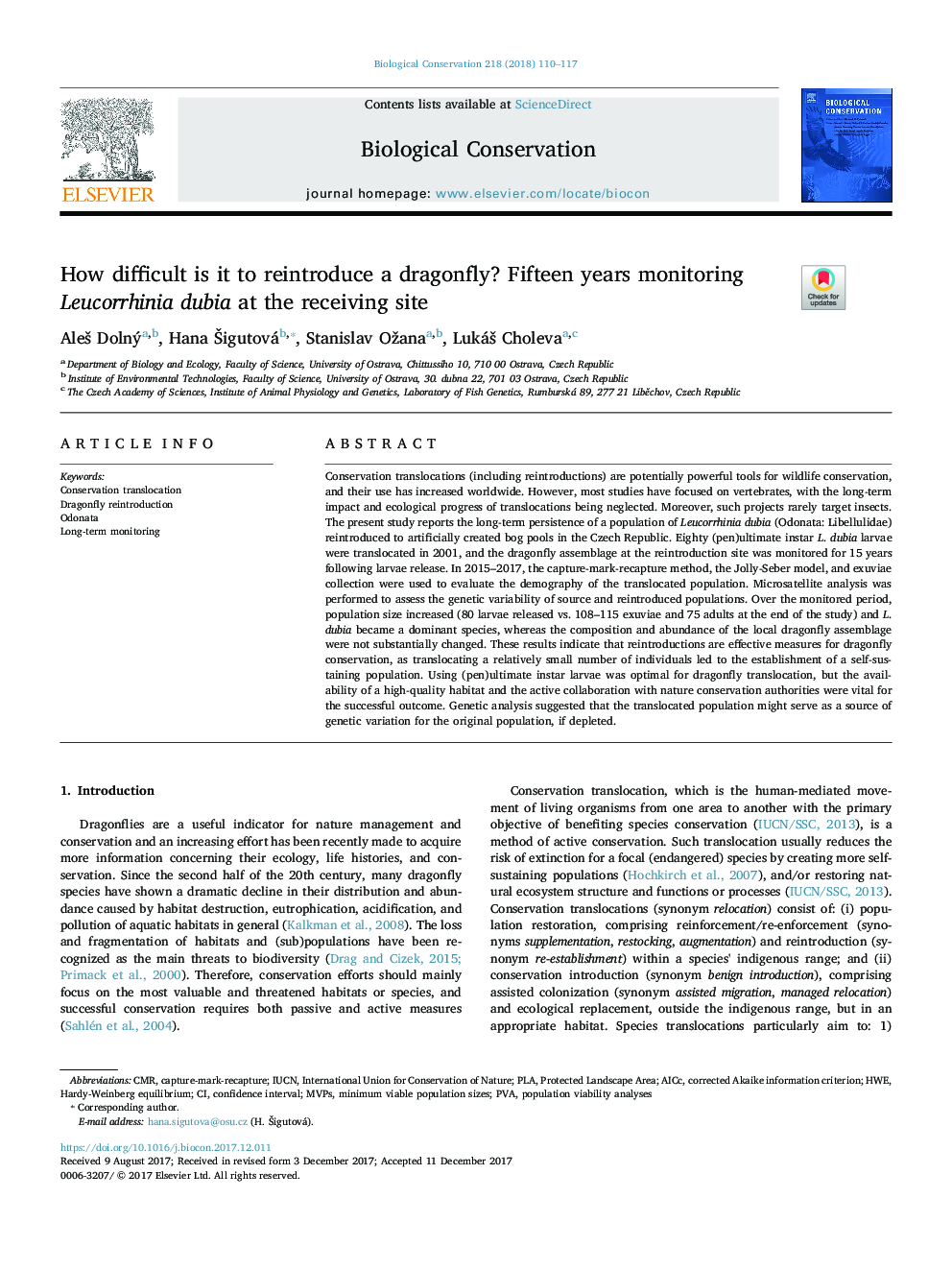| کد مقاله | کد نشریه | سال انتشار | مقاله انگلیسی | نسخه تمام متن |
|---|---|---|---|---|
| 8847503 | 1617887 | 2018 | 8 صفحه PDF | دانلود رایگان |
عنوان انگلیسی مقاله ISI
How difficult is it to reintroduce a dragonfly? Fifteen years monitoring Leucorrhinia dubia at the receiving site
دانلود مقاله + سفارش ترجمه
دانلود مقاله ISI انگلیسی
رایگان برای ایرانیان
کلمات کلیدی
PVACMRPLAAICccorrected Akaike Information CriterionHWEOdonataIUCNInternational Union for Conservation of Nature - اتحادیه بین المللی حفاظت از طبیعتPopulation viability analyses - تجزیه و تحلیل داده های زندهHardy-Weinberg equilibrium - تعادل هاردی-وینبرگCapture-mark-recapture - ضبط-علامت-ضبطconfidence interval - فاصله اطمینانLong-term monitoring - نظارت طولانی مدت
موضوعات مرتبط
علوم زیستی و بیوفناوری
علوم کشاورزی و بیولوژیک
بوم شناسی، تکامل، رفتار و سامانه شناسی
پیش نمایش صفحه اول مقاله

چکیده انگلیسی
Conservation translocations (including reintroductions) are potentially powerful tools for wildlife conservation, and their use has increased worldwide. However, most studies have focused on vertebrates, with the long-term impact and ecological progress of translocations being neglected. Moreover, such projects rarely target insects. The present study reports the long-term persistence of a population of Leucorrhinia dubia (Odonata: Libellulidae) reintroduced to artificially created bog pools in the Czech Republic. Eighty (pen)ultimate instar L. dubia larvae were translocated in 2001, and the dragonfly assemblage at the reintroduction site was monitored for 15Â years following larvae release. In 2015-2017, the capture-mark-recapture method, the Jolly-Seber model, and exuviae collection were used to evaluate the demography of the translocated population. Microsatellite analysis was performed to assess the genetic variability of source and reintroduced populations. Over the monitored period, population size increased (80 larvae released vs. 108-115 exuviae and 75 adults at the end of the study) and L. dubia became a dominant species, whereas the composition and abundance of the local dragonfly assemblage were not substantially changed. These results indicate that reintroductions are effective measures for dragonfly conservation, as translocating a relatively small number of individuals led to the establishment of a self-sustaining population. Using (pen)ultimate instar larvae was optimal for dragonfly translocation, but the availability of a high-quality habitat and the active collaboration with nature conservation authorities were vital for the successful outcome. Genetic analysis suggested that the translocated population might serve as a source of genetic variation for the original population, if depleted.
ناشر
Database: Elsevier - ScienceDirect (ساینس دایرکت)
Journal: Biological Conservation - Volume 218, February 2018, Pages 110-117
Journal: Biological Conservation - Volume 218, February 2018, Pages 110-117
نویسندگان
AleÅ¡ Dolný, Hana Å igutová, Stanislav Ožana, LukáÅ¡ Choleva,